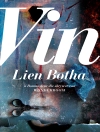This is the biography of a set of rare Buddhist statues from China. Their extraordinary adventures take them from the Buddhist temples of fifteenth-century Putuo – China’s most important pilgrimage island – to their seizure by a British soldier in the First Opium War in the early 1840s, and on to a starring role in the Great Exhibition of 1851. In the 1850s, they moved in and out of dealers’ and antiquarian collections, arriving in 1867 at Liverpool Museum. Here they were re-conceptualized as specimens of the ‘Mongolian race’ and, later, as examples of Oriental art. The statues escaped the bombing of the Museum during the Second World War and lived out their existence for the next sixty years, dismembered, corroding and neglected in the stores, their histories lost and origins unknown.
As the curator of Asian collections at Liverpool Museum, the author became fascinated by these bronzes, and selected them for display in the Buddhism section of the World Cultures gallery. In 2005, quite by chance, the discovery of a lithograph of the figures on prominent display in the Great Exhibition enabled the remarkable lives of these statues to be reconstructed.
Spis treści
List of illustrations
Preface
Acknowledgments
Introduction
Research and Serendipity
Objects, Meanings, Biographies
Objects and the Museum
Chapter 1. Sacred Beings in the Ming (1368-1644) and Qing (1644-1911) dynasties
Construction: Births, Iconographies and Consecrations
Location: the Island and the Temple
Reception: Pilgrims, Lay Worshippers and Monks
Chapter 2. Trophies of War, 1844-1852
China and the World Outside
Edie’s War: Disease, Death and the Deity of Compassion
Edie’s Objects: the Significance of Things
From Public to Private, Sacred to Profane
Chapter 3. Articles of Industry: the Great Exhibition of 1851
Articles of Imperial Ideology
China’s Refusal
China at the Great Exhibition
Late Arrivals: Exhibiting Edie’s Collection
Pilgrimage and Ritual at the Temple of Industry
China at the Crystal Palace in Sydenham
Chapter 4. Curiosities, Antiquities, Art Treasure, Commodities: 1854-1867
In the Cabinet of Gems: Objects of Bram Hertz, 1854-1856
Art Treasure: May to October 1857
Commodities: Sotheby’s, 31 May 1854 and 24 February 1859
Objects of Joseph Mayer: Antiquities and Curiosities, 1856-1867
Chapter 5. Specimens of Ethnology and Race: Liverpool Museum, 1867-1929
From Private to Public
Objects in the Museum
At the Back of the Walker Art Gallery and in Gatty’s Catalogue: 1882
Objects of the ‘Mongolian’ Race: 1894-1929
Chapter 6. Objects of Art, Archaeology and Oriental Antiquity: Liverpool Museum, 1929-1996
Chinese Objects as ‘Art’
Objects in War and Store: ‘An Exhibition of Official Neglect’
Objects of Archaeology: 1940-1966
Objects of Antiquity: 1966-1996
Guanyin Rediscovered: Objects of Chinese Metalwork and Connoisseurship, 1970s-1990s
Chapter 7. Objects of Curation and Conservation, 1996-2005
New Identities
Objects of Conservation
Objects of ‘Contact’ and ‘Encounter’
Chapter 8. Future Lives: Liverpool or China
Objects in Liverpool
Objects in China
Postscript: Confessions of a Former Curator
Bibliography
Index
O autorze
Louise Tythacott is a Professor of Curating and Museology of Asian Art at the School of Oriental and Asian Studies (SOAS), University of London. She has worked in the museum sector for over a decade, latterly as the Head of Ethnology at the National Museums Liverpool (1996–2003), where she curated the Asia section of the World Cultures Gallery, which opened in 2005.












